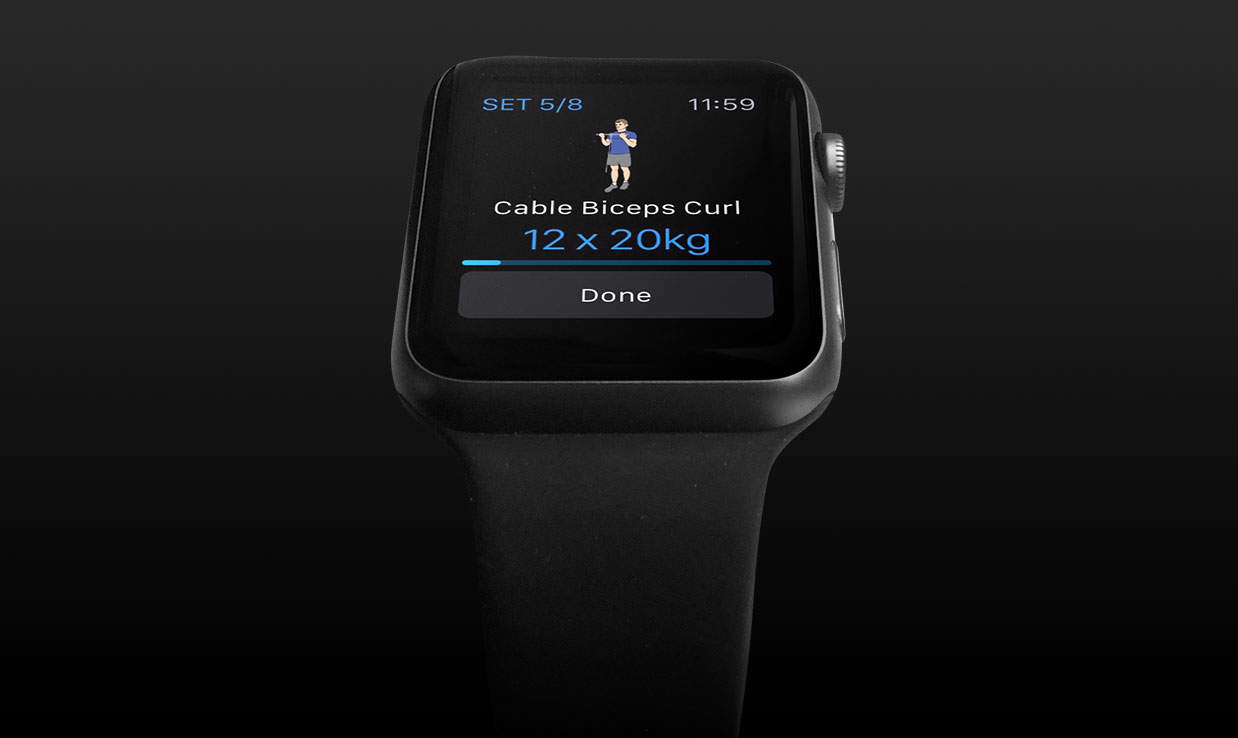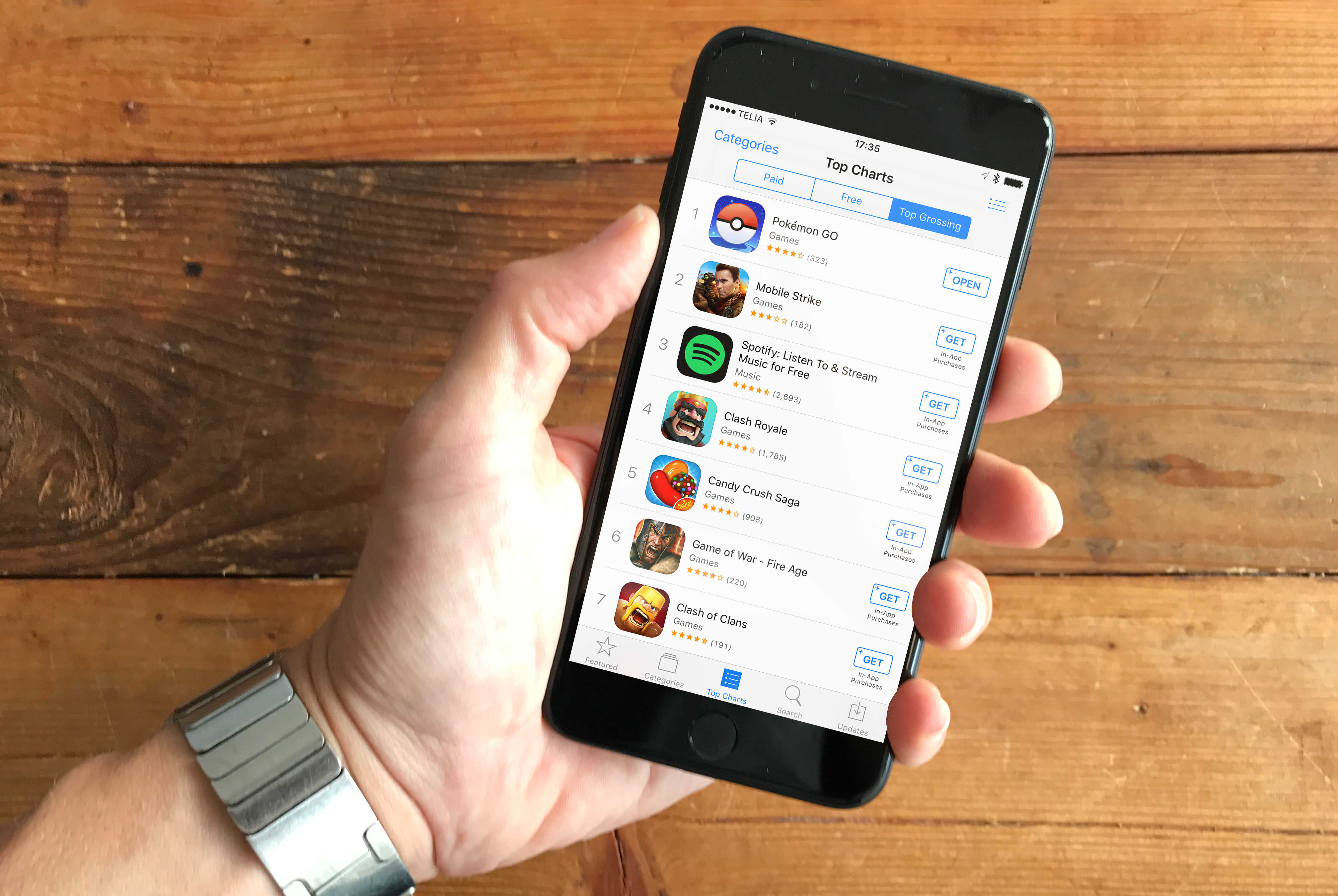I work on an iPhone app called Reps & Sets as a hobby project in my spare time. This week, my partner and I came to the conclusion that there is no future for our app as a paid download, so we have reluctantly decided to make it free.
This was an incredibly tough call, because we have invested literally thousands of hours in developing our app over the years. Giving all that hard work away for free is heartbreaking. But we didn’t feel we had much choice.
This post contains affiliate links. Cult of Mac may earn a commission when you use our links to buy items.
Why no one buys apps anymore
We started developing Reps & Sets in 2010. Back then, in-app purchases were still a relatively new phenomenon. This type of payment mechanism didn’t strike us as being relevant to our app. I realize now that we failed to anticipate just how fundamentally in-app purchases would change the App Store.
Back then, app sales were still booming. But in hindsight, the writing was already on the wall for paid downloads. Today, Minecraft: Pocket Edition is the only paid app in the App Store’s top 200 grossing chart. All the others are “freemium,” generating their revenue by selling items within the app.
You could argue that this is just part of a long-term trend in the software industry, as companies like Microsoft and Adobe have moved from selling shrink-wrapped software with an up-front charge to providing ongoing subscriptions and cloud services.
This move away from paying up front is not limited to software. In the music industry, even Apple has been forced to concede defeat. Steve Jobs once shunned subscription services such as Spotify, arguing that “people want to own their music.” With the launch of Apple Music, however, Cupertino made a U-turn and jumped on the subscription bandwagon. Rumors indicate Apple might even ditch the iTunes Music Store altogether, which would have been an unthinkable move just five years ago.
If you can’t beat them, join them

Photo: Repsio Ltd
Apple’s Music strategy is effectively “if you cant beat ’em, join ’em.” And in our own humble way, that is exactly what we have decided to do with Reps & Sets.
This week we made all the existing features of our app free. Instead we will be selling an in-app subscription, which provides access to all the new features we add moving forward, starting with our Apple Watch app. This way, all of our current users, who bought the app, can continue to access the features they paid for without incurring any extra cost. Hopefully the Apple Watch app will tempt some into subscribing, and maybe new users will discover the app now that it is free.
Time will tell if this business model works for us. Since our app is just a hobby project we do in our spare time for fun, we don’t expect it to earn us a fortune (although of course that would be nice). But we would at least like to see it wash its face.
I wish it hadn’t come to this: Why freemium sucks
The reason we held out for so long against the switch from paid to freemium is because, honestly, we think it sucks.
Last year I wrote a manifesto for classy app developers. I argued that app pricing should be clear and easy for the user to understand. Frankly, most freemium apps are anything but.
Take Pokémon Go for example. There is no way I would have downloaded this “free” app had I known that it would end up costing me over $40. Yes, I realize that I’m a grown adult and it is entirely up to me how much I choose to splurge on cute pocket-size creatures.
But my lack of impulse control aside, the fact remains that, like most freemium software, the total cost of ownership for the game is unclear at the start. When you download it, you really have no way of knowing how much storage, incense, lucky eggs and lures you will need to purchase.
To be fair, Pokémon Go is far from unique in this respect. In fact, these days this is pretty much the norm, which means I now avoid the temptation of “free” games like Madden NFL Mobile because I have absolutely no idea how much they are really going to cost me. Suddenly the price of the console version looks like a bargain.
Like Steve Jobs said about music, I believe that people want to own their apps. That way you know what the total cost will be. And, once purchased, you can be sure you get full access to everything you need with no surprise extra costs.
Apple could have saved paid apps
[contextly_auto_sidebar]
What I find most frustrating is that it did not have to be this way. It’s true that Apple had little option but to offer in-app purchases. The switch to services was, after all, the direction in which the whole industry was heading. But there is still a great deal Apple could have done to promote paid apps on the App Store.
The first big problem paid-app developers have is that Apple provides no way to offer a free trial. Prospective buyers just get to see a 30-second video, five static screengrabs and some plain-text blurb. That is not much on which to base a purchasing decision.
Apple also does not allow developers to offer free “demo” versions on the App Store. Cupertino requires all apps to be useful in their own right. Some developers attempt to get around this by offering feature-limited “lite” versions. But attempting to get the user to switch from one app to another is not easy, especially if the lite version sufficiently meets their needs.
For years, developers like us have been hoping Apple would provide a way to offer a free one-month trial. Now it looks like that would be too little too late, since the market for paid apps is all but dead anyway.
Things are very different for in-app subscriptions, where Apple makes it easy for developers to offer a one-month free trial. No wonder so many developers are switching to this model.
Pay once, then ride for free
Another problem for paid-app developers is that Apple does not allow developers to charge for updates. This means that users who purchased our app five years ago for the princely sum of $1.99 receive all our hard work on subsequent updates at absolutely no extra cost. So in reality, new versions of the app were effectively free for them already.
Once again, some developers attempted to get around this by releasing major updates of their app as new apps entirely. But this is not an elegant solution. Unless you are willing to cold-bloodedly end support for owners of previous versions, you end up with multiple versions of your app available on the App Store, which is a marketing nightmare.
App development is not a simple matter of building an app, then sitting back and raking in the money. It requires continuous ongoing development to maintain compatibility with new hardware and new versions of iOS. Since we launched the app, we’ve had to add support for numerous big changes, including: iOS 7’s redesign, Retina displays, larger screen sizes, HealthKit, Today widgets, Apple Watch, interactive Notifications and iCloud Drive. The list is endless.
Users rightly expect support for all the latest Apple features. But this doesn’t happen by magic. Apple frequently claims at its annual Worldwide Developers Conference that supporting new features is super-simple for developers, which often gives users unrealistic expectations.
The reality for developers tends to be quite different. Any app that has been around a few years, like ours, has built up “technology debt,” which means it relies on older APIs and functions. A small developer can’t afford a full rewrite every time there’s a major shift, like from Objective-C to Swift, Auto Layout constraints, etc. These things take time.
As Benjamin Franklin famously said, time is money. Without the ability to charge users for updates, app development quickly becomes financially unsustainable.
Apple does not owe us a living
You might say that if we can’t make a living out of our app, that’s our problem. And of course you are right. Apple does not owe us, or indeed any developer, a living. And it is entirely up to Cupertino how it chooses to steer the App Store.
But when free becomes the norm, what really suffers is diversity. I believe that is ultimately bad for users as well as developers.
Apple likes to crow about the millions of apps available on the App Store. But I wonder just how many of them remain actively developed. Even John Gruber recently called it a day with his Vesper app. And if someone that high profile struggled to market a paid app, what hope is there for the rest of us?
Only mega-corps like Google and Facebook can really afford to give away apps. And that is rarely where innovation comes from. Just look at how Instagram, iMessages and SnapChat busily copy each others’ features.
Without the continued contributions of indie developers, the App Store becomes a much more dry and sterile place. If they can’t make money selling apps, that is bad news for everyone.


